Each week this summer, Cara Nicoletti of The Meat Hook is helping us get to know our favorite cuts a little bit better – and introducing you to a few new ones, too. Read on, study up, then hightail it to your nearest butcher.
Today: Cara explores the endless possibilities of pork belly. (Bacon, anyone?)
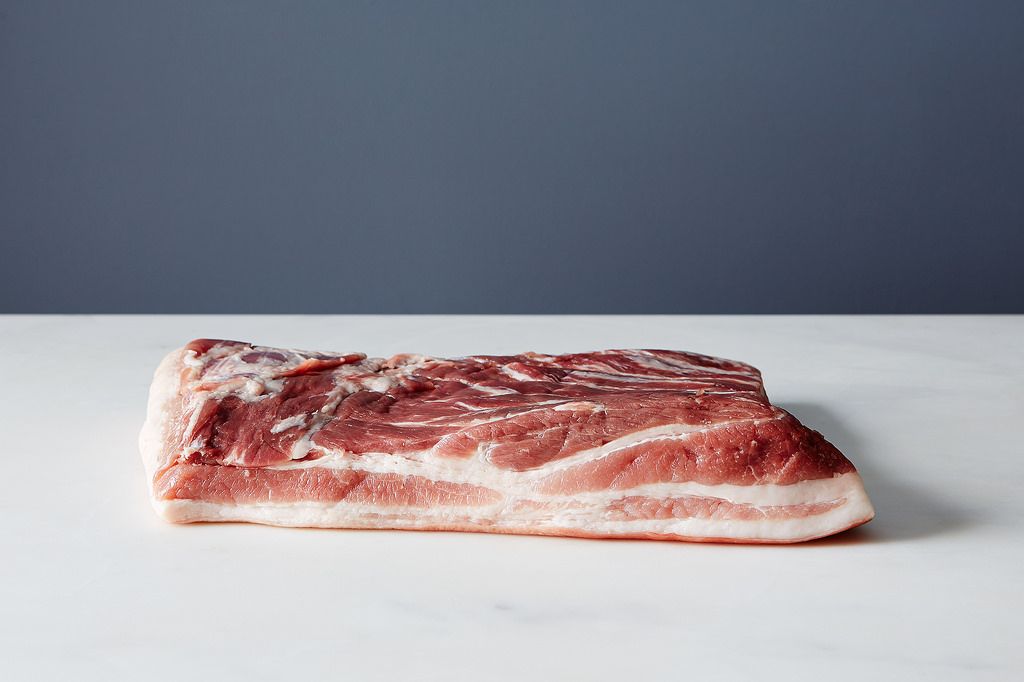
You may not realize it, but you probably eat pork belly on a pretty regular basis. Pork belly has been having a moment for the past few years -- and lately, it’s showing up everywhere in its most recognizable form: BACON. These days, you can find bacon sprinkled on cupcakes, crumbled on donuts, flaked into chocolate bars, wrapped around burgers, and pulverized into spreadable jam. Bacon is a miracle -- but pork belly in its uncured, un-smoked form is nothing to sneeze at. In recent years, chefs have really taken notice of this previously underused cut. Praised for its succulent fat, crisp skin, and deeply flavorful meat, it's been making appearances on more and more restaurant menus -- but it also belongs in your kitchen. Let's get to know pork belly.
More: The secret to perfectly cooked bacon, every time? Stick it in the oven.
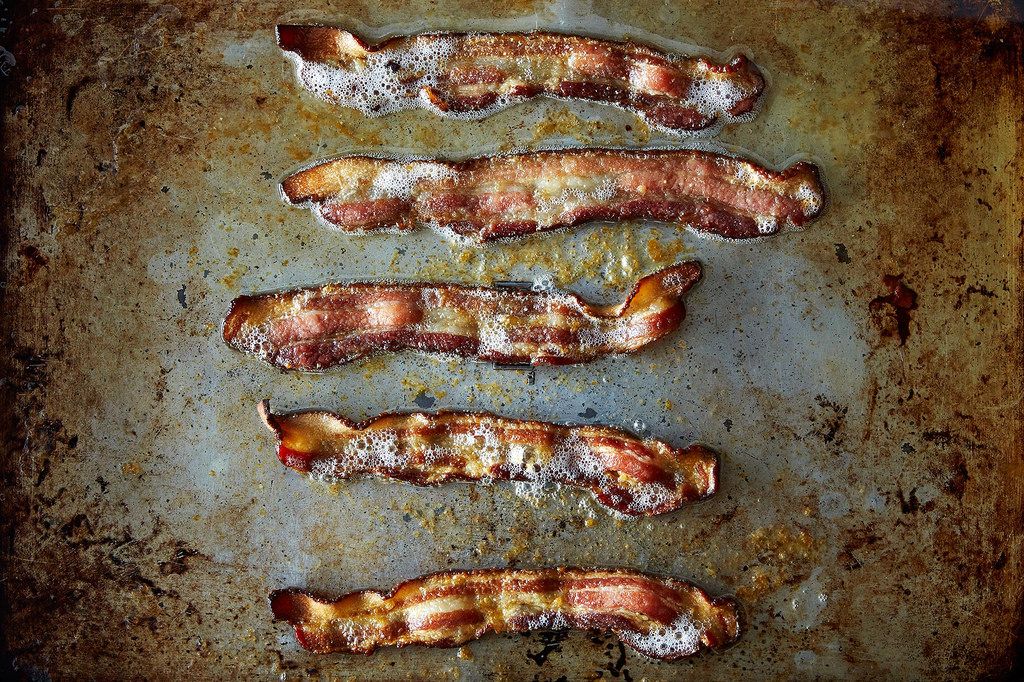
Despite how familiar we’ve gotten with pork belly in a restaurant setting, many people are still intimidated to cook it at home. However, once you get to know pork belly, it's a lot less frightening.
Pork belly is exactly what it sounds like: the hog’s belly muscles, which lay on the underside of the loin and are covered by the spare ribs. Like the belly of most animals, it has a fat high content, which is part of the reason it can be intimidating to prepare: If they're not handled correctly, the fat and muscle seize up, resulting in a chewy, rubbery mess -- blech!
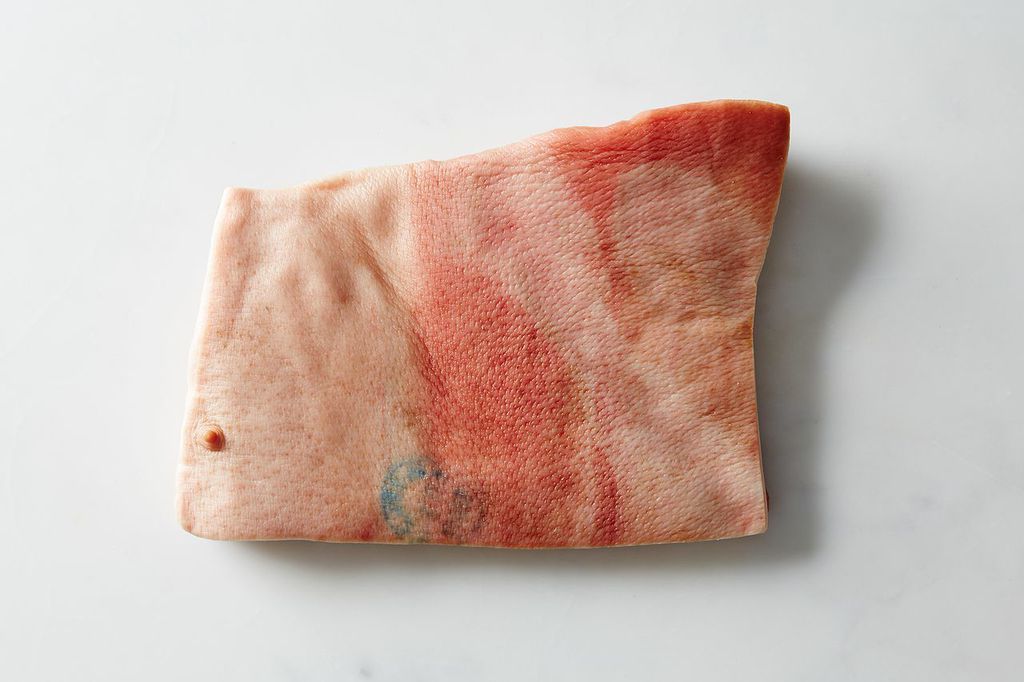
The key to perfect pork belly is a long, slow braise or roast, followed by a quick flash of high heat to the skin. This method allows the fat to render slowly and surround the muscle while it cooks, leaving both the meat and the fat melt-in-your-mouth tender. The final blast of high heat finishes it off, giving the skin that satisfying, crispy crunch. (You can do this in a pan over high heat, under a broiler, on a grill, or even with a torch, like you would with crème brulée.)
More: Once you've cooked your pork belly, turn them into Momofuku's iconic pork buns.
Pork belly is generally one of the least expensive pork cuts and can be used in a wide variety of dishes, which makes experimenting with it at home a little less scary. Like any cut of meat, the fat content varies from animal to animal -- so look for a specimen with a relatively even fat-to-meat ratio. Ask your butcher to remove the spare ribs and leave the skin on (unless you are making your own bacon, in which case you’ll want to remove the skin). Have your butcher score the skin for you in a cross-hatch pattern, which will help the fat render and the skin crisp up. Scoring is a good idea on pork belly without the skin, too -- it'll help whatever rub or marinade you're using soak in.
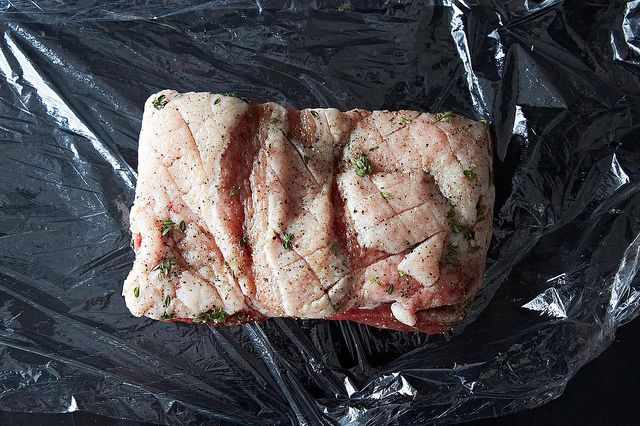
Though pork belly benefits from braises and slow roasts, you don't have to avoid it in the summertime. To combat excess richness, simply pair your roast or braise with fresh, bright ingredients. Try dipping it in a ginger-rhubarb compote, tucking it in a taco with watermelon jicama jalapeño salsa, or sandwiching it into a Bánh Mi alongside crunchy pickled vegetables and fresh cilantro. Now you can enjoy pork belly all year long!
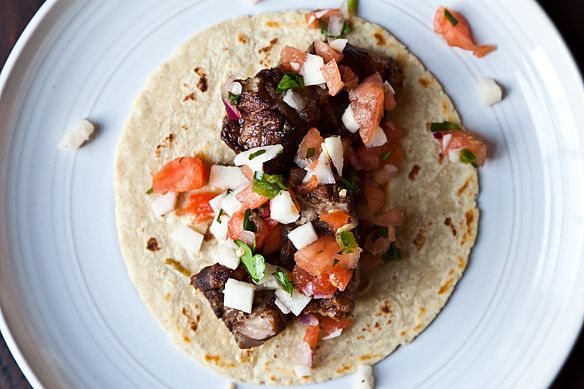
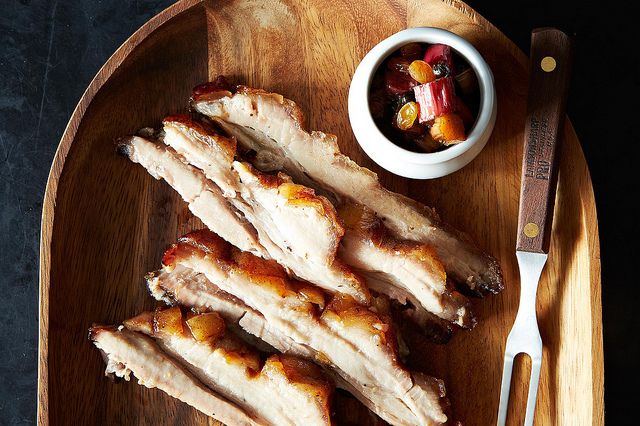
Whats your favorite way to use pork belly? Let us know in the comments!







See what other Food52 readers are saying.